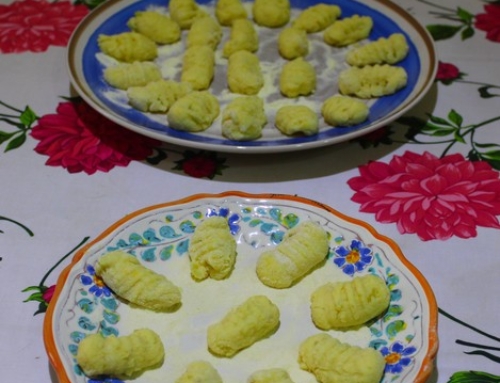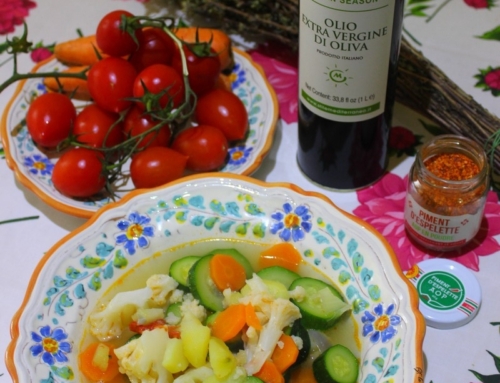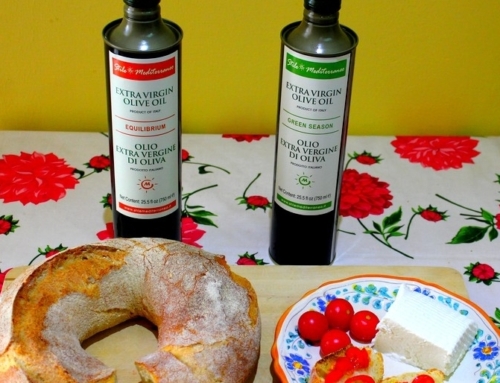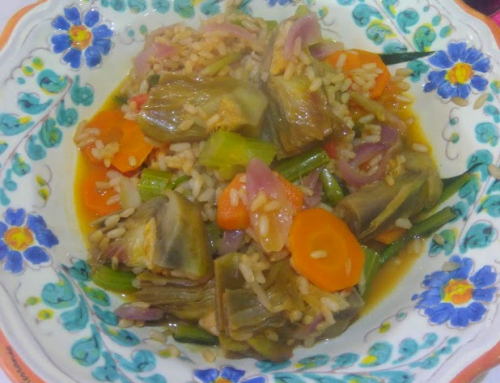In Southern Italy we follow the Mediterranean diet and so we cook with herbs which allow us to cut the salt quantity. A key plant ingredient in most our Mediterranean recipes are: capers.
Puglia is the perfect place for those who love capers! We produce tons of capers. Except for sweets, almost all recipes from the traditional cuisine of Puglia, require capers…from fish, to meat, vegetables and pasta. In Puglia, we certainly use more capers than garlic or other herbs.
Yesterday, I went to the market with a specific mission.
I wanted to buy a caper plant in order to try planting and producing capers….once again! I might have tried 20 times already, always with no success!
It’s really difficult to grow capers. They prefer to grow wild only where they decide to grow! They require just the right sun exposure, the most dangerous rock and sea cliff, just the right climate.
I always wondered how they can get to grow so well on top of the most dangerous sea cliffs (see picture above)…and not in my chalky garden with all my care and love!
When you drive along the Adriatic coast from Otranto down to Santa Maria di Leuca you see lots of people with bags climbing the sea cliffs: they are picking capers…and of course the best capers are the smallest ones, the most difficult to pick. May be that’s why they are the most expensive ones!
The smal capers are so tasty compared to the big ones.
The recipe to cure and prepare the fresh capers is the following:
1kg freshly picked capers (the smallest)
1kg sea salt
White wine vinegar (as necessary)
Wash the capers, put them in a jar and mix them with sea salt. Leave them with sea salt for at least 10 days.
We use salt to remove capers’ bitterness. Please consider that it is very important you use “sea” salt since it helps preserving the capers’ flavor and taste.
Salt helps preserving food: therefore capers with salt can last for many months or years.
After the first 10 days, wash them to remove the sea salt, put them in another jar, cover them white wine vinegar, close the jar with the lid and leave them for other 10 days.
After 10 days, repeat this step once more. Remove the vinegar and put them in the jar covering them again with the white wine vinegar.
Leave them with vinegar for other 10.
Now they are ready to be eaten.







Tim: in Italy we also put capers on pizzas. We put capers and anchovies. Delicous!
Really, we put capers almost on everywhere: stuffed focaccia, pasta salad, meatballs, fish, stuffed calamari, salad. They really add the special flavor that your dish was missing…as you said! we love them.
They literally are like a little bomb when it comes to flavor. When I eat capers it's like an explosion of flavor goes off in your mouth, and it totally adds a little extra something that was certainly missing before.
I'd never made them before, but I think I have a project for this fall based upon the recipe posted here :) But we (my wife and I) use them a lot, especially with fish cuisine. Bulgarians also use them a lot on their pizzas, which was something I had to get used to (being from America), but I have to admit…it's a pretty amazing addition.
Capers in salads are awesome as well.
i think i should go now n get a jar of it…….have seen it being used in salads too…
you guys are inducing me to use new ingredients…:D
thanks.
Sangeeta: I agree with Tim. Capers are fantastic: the best are those from Puglia or Sicily (Pantelleria).
Food tastes completely different when you add capers.
I will post recipes in the next weeks since we use them even more in our summer recipes (sword fish with white wine and capers; eggplants with capers and so on).
I even love them in my sandwich with cheese and tuna fish…
Sangeeta:
Capers are divine! They add an amazing flavor to a lot of different dishes, and are really easy to work with. I love them. Hands down, one of my favorites.
Thanks for sharing another one, Cinzia.
hi Marika and Cinzia…
we don't get capers here n i have never tasted them….we do get the pickled ones in our supermarkets but never tried ..
if you give some recipe , may be i'll try then….keep posted about the plant, i love plants n grow some of my own herbs too.